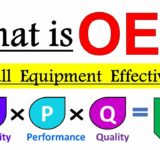If you’re looking for an efficient process to keep all your documents organized and up-to-date, then document control is the solution for you. In short, document control is essential in countless business processes, as it ensures that the right people have access to up-to-date and accurate information every single time. However, there are a few things you should know if you want to use this system effectively and get the most out of it. And we will give you all the information to just do that!
Set Up a Document Control System for Your Business
Are you tired of sifting through mountains of paperwork, struggling to find the right document when you need it? A document control system may be just what your business needs. By implementing a QMS document management system, you can streamline your workflow and ensure that all documents are organized and easily accessible. Besides improving efficiency, it can lead to increased compliance and better decision-making. Don’t let disorganization hold your business back any longer. Set up a document control system today and start reaping the benefits.
Understand the Different Types of Documents
Document control systems can manage various types of documents, including text-based ones like reports, documents with complex graphics and structures (drawings and diagrams), and multimedia files (audio or video recordings, scanned images, emails, and web content). Let’s take a closer look at each.
- Text-based documents include reports, spreadsheets, policies, and procedures.
- Graphics-based documents require a higher degree of organization due to their complexity. For instance, drawings and diagrams are used to illustrate complex structures or processes.
- Multimedia files such as audio or video recordings, scanned images, emails, and web content represent an additional challenge for document control systems. Multimedia files may contain audio, video, or scanned images; emails are often used to communicate important information between stakeholders; and web content includes data stored on websites, blogs, and other online resources.
Decide on the Appropriate Level of Access to Your Documents
When it comes to document control, deciding on the appropriate level of access is crucial. You want to make sure that the right people have access to the right information while also protecting sensitive data from unauthorized eyes. Finding the balance between accessibility and security can be a challenging task, but any organization needs to ensure the integrity and confidentiality of its documents. By implementing a robust document control system, you can set permissions and access levels for different users, create a secure storage environment, and keep track of any changes or updates made to your documents. Don’t wait until it’s too late — make sure that your information is safe and accessible to those who need it.
Establish Rules and Regulations
If you need to maintain the integrity and consistency of documents within an organization, it’s crucial to establish rules and regulations for document review, approval, and distribution. Document control is an essential process that involves managing and regulating documents throughout their lifecycle. If you enforce these procedures, an organization can ensure efficient communication and compliance with regulations and reduce the risk of errors.
A robust document control system also eliminates confusion and ambiguity in document exchange, ensuring that employees have access to the most current and accurate information. A well-structured document control process can improve productivity, reduce the risk of errors, and help organizations meet their regulatory requirements.
Utilize Automation Methods
In today’s fast-paced world, every business wants to optimize its operations and make them as efficient as possible. And with the help of technology, businesses can eliminate manual processes and streamline their operations. Automation methods include workflows, electronic signatures, search and retrieval tools, and automated version control systems. Thanks to these methods, businesses can save time and reduce errors in document management. As a result, employees can easily collaborate, edit, and approve documents, ensuring that the right people have access to the right information at the right time. Utilizing automation methods is an investment in efficiency, and it’s a smart way to stay ahead of the competition.
Secure Your Documents with Document Retention Policies
Document retention policies are an essential component of any document control system. These policies help organizations avoid legal liability by ensuring that documents are stored correctly and for the appropriate length of time. Depending on your organization’s needs, you can set up different policies for different types of documents — from financial records to personnel files. It’s also a good idea to review these policies on a regular basis and update them if needed. With the right document retention policies in place, you can protect your business from unnecessary legal risk and ensure compliance with regulations.
Track Document Versions
One of the most important aspects of any document control system is version control — it allows you to keep track of each version of a document and ensure accuracy. It also prevents multiple people from making changes to the same document at the same time, which can lead to confusion and errors. If you implement version control in your strategy, you know that each person is working on the most current version of a document and that no changes are lost or overwritten.
Implementing a Quality Assurance Plan (QAP) in Your Systems
A Quality Assurance Plan (QAP) provides a set of protocols and processes that ensure quality throughout your document control system. This includes developing clear procedures for document review, approval, and distribution, as well as establishing rules about who has access to what documents and when they can be edited or updated. Additionally, it includes implementing procedures for tracking versions of documents and ensuring accuracy throughout the process. A well-structured QAP is essential for any organization looking to improve its document control system and ensure that all stakeholders have access to the most up-to-date information.
Document control ensures that all stakeholders have access to the right information at the right time, improves collaboration between teams, and helps organizations meet their regulatory requirements. By understanding the points outlined in this article, organizations can develop a robust document control system that helps them stay organized, compliant, and efficient. At the end of the day, your organization can ensure the accuracy and security of its documents and maintain its competitive advantage.








